Most fruits are not only highly perishable but seasonal as well. Fortunately, through proper preservation, you can enjoy any fruit at any time of the month or year. So, what are some of the ideal ways to preserve fruit?
You can preserve fruit by drying, canning, or even freezing. Other promising ways of making your fruit last longer include using natural preservatives and vacuum sealing.
Preservation can help keep pathogens away while maintaining the flavor and shape of the fruit. Here’s how to go about preserving your fruit:
Table of Contents
1. Use Natural Preservatives
Natural preservatives have been used for thousands of years. There are different natural preservatives you can use, including the following:
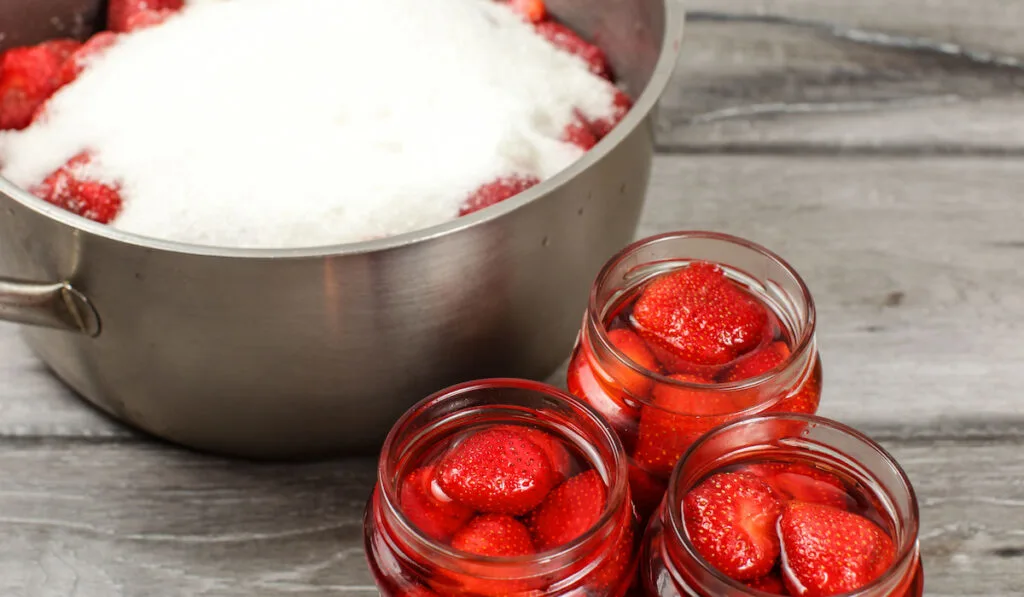
Sugar Solution
Like salt, sugar can absorb water in the fruit, reducing water activity. Low water activity in the fruit means limited bacteria growth.
How to preserve:
- Wash your fruit to remove any dirt and let it dry.
- Put the fruit in a clean, sterile jar.
- Add boiling water to the jar with the fruit.
- Leave to rest for about 10 minutes to remove any trapped air.
- Drain out the water so that you only have the fruit left.
- Add 2 to 3 tablespoons of sugar to each jar.
- Fill the jar with boiling water again, then close the lid tightly.
- Let it rest for 24 hours untouched.
- Store them as appropriate.
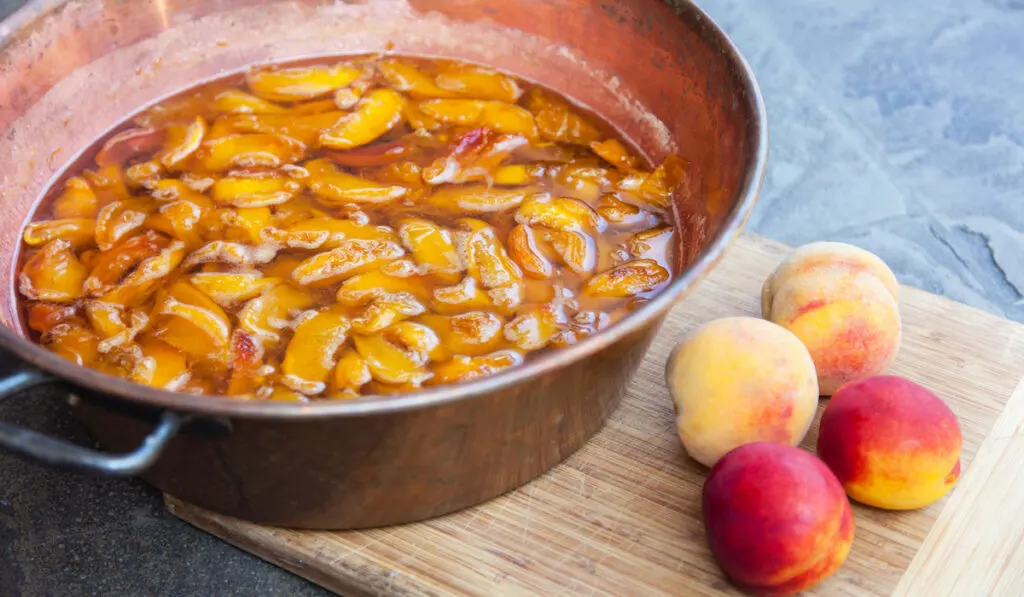
Sugar Syrup
You can use sugar syrup to preserve fruits such as berries, peaches, and apricots.
For this method, you’ll need sugar and some water. Ensure the amount of sugar you use measures equally to your fruit. For instance, one pound of fruit should go with one pound of sugar.
The sugar-to-water ratio should be 2:1 to allow for the formation of a thick syrup.
How to preserve:
- Pour 2 cups of water into a non-stick pan and then add 4 cups of sugar.
- Heat the solution until the sugar dissolves.
- Add the fruit to the syrup and simmer.
- Once the fruit is soft, remove it from the pan and let it cool down. The fruit and the syrup should cool separately.
- Pour the syrup into a sterilized jar.
- Add your fruit and then seal the jar.
- Store as appropriate.
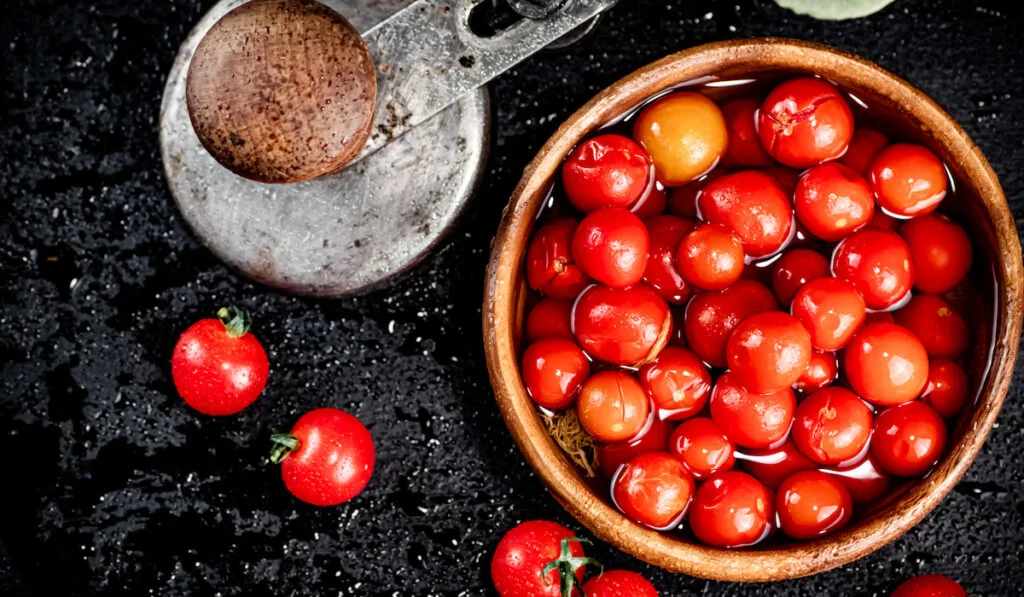
Vinegar Solution
Vinegar can be an ideal preservative if you want your fruit to last for a few more days.
Vinegar solution as a preservative is a method best suited for fruits that are low in acid, like pear, zucchini, and tomatoes.
You can boost their acid by adding lemon juice or citric acid to increase the acidity of the solution.
How to preserve:
- Fill a bowl with 2 to 4 cups of water.
- Add 2 to 4 tablespoons of vinegar. You can use organic or white distilled vinegar if you don’t want a strong flavor.
- Put fruit in the solution, and then soak for 10 minutes. If you have different varieties of fruits, soak them separately.
- Drain and rinse the fruit under running water.
- Spread the fruit on a clean towel and gently wrap it to remove excess water.
- Line your container with a paper towel and then spread the fruits on it. If you have several fruits, you can place a sheet of paper towel between each set. Alternatively, you can use separate jars.
- Slightly close the lid to allow excess air to escape.
- Store in the fridge or freezer.
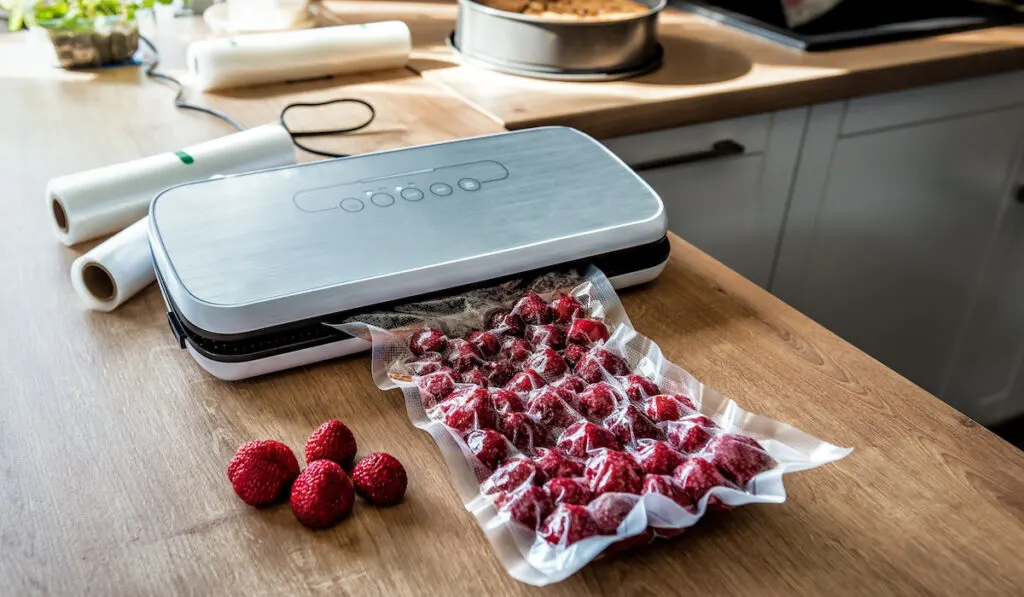
2. Vacuum Seal
Vacuum sealing eliminates all the air in the container, creating an environment that does not support the growth of pathogens. This protects the fruit from spoiling.
How to preserve with vacuum bags:
- Put your fruit in the vacuum bag. Do not fill the bag completely to leave enough space for vacuuming.
- Vacuum and seal the bag with a vacuum seal machine.
- Store the fruits in the fridge or freezer.
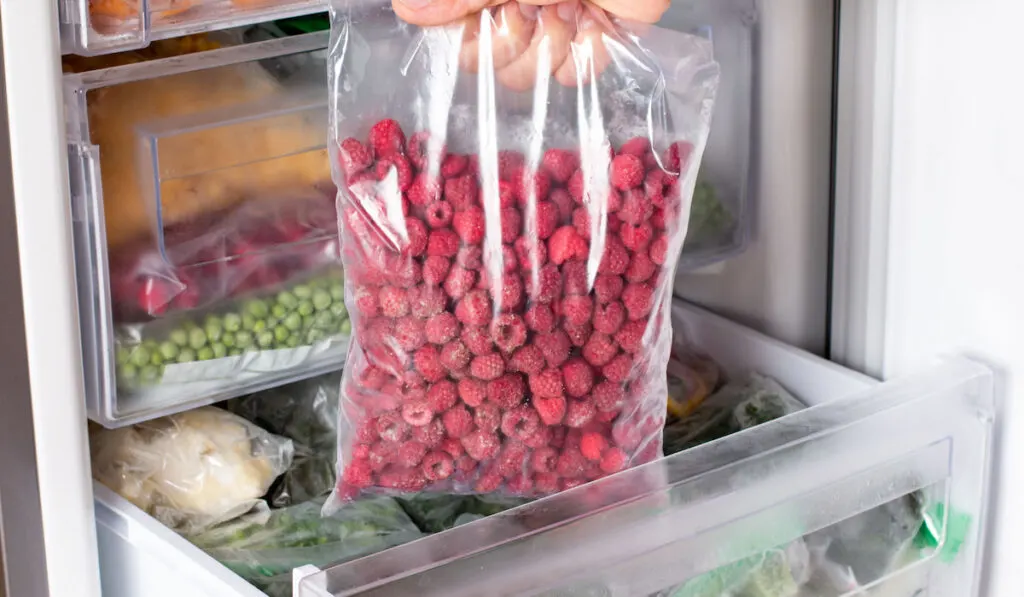
3. Freeze the Fruit
Freezing is one of the most common modern methods of preserving fruit. The cold environment slows the growth of microorganisms that may spoil the fruit.
Fruits like pineapples, apples, berries, pears, peaches, nectarines, and mangoes can do well with freezing. You can either preserve your fruits whole or peeled.
How to freeze peeled fruit:
- Peel the fruit and then cut it into desired shapes and sizes. In addition, be attentive to removing any part that may be overripe or spoiled.
- Wash thoroughly with water and salt, lemon juice, or fresh fruit solution to prevent discoloration or spoilage.
- Drain, then spread out the fruit in flat containers with parchment-lined paper to prevent them from sticking when freezing. If you have different types of fruits, put them in separate containers to avoid crossover of flavors.
- You’ll need to freeze the fruits for up to 3 hours, so they are strong enough before placing them in resealable freezer bags in small batches.
- Store the fruits in the deep freezer.
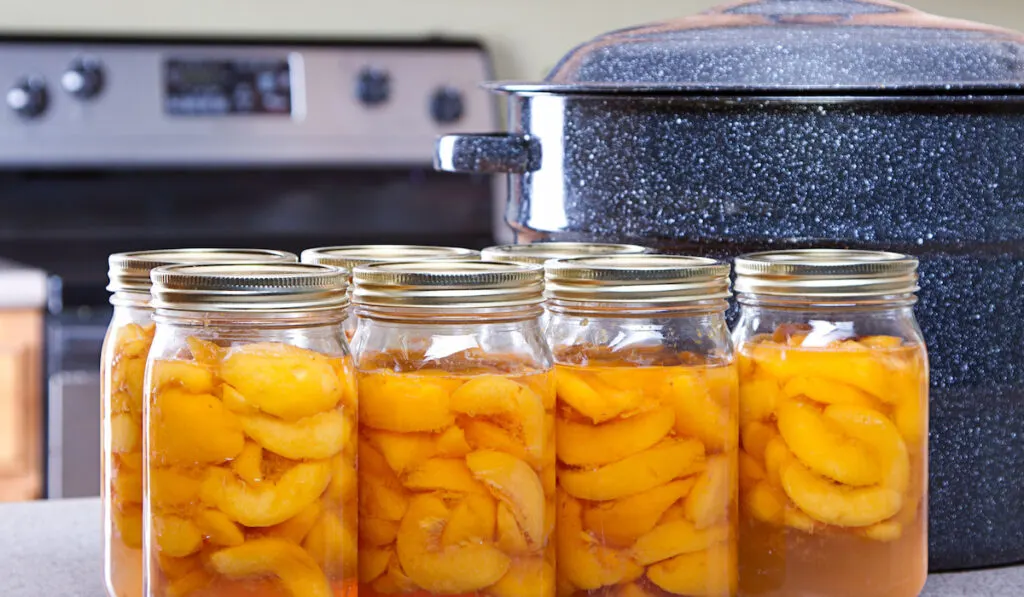
4. Can the Fruit
The art of fruit canning can never get old.
To can fruit, you may need a canning pot, sugar syrup, a canning magnet, canning jars, and sterile inner rubber seals.
How to preserve:
- Clean the canning jars.
- Slice your fruit into thin pieces. The smaller the pieces, the more fruit you’ll put in the jar and the less syrup you’ll need.
- Fill the jar with the fruit. Leave enough space for sealing.
- Pour your pre-boiled syrup into the jar while leaving a quarter of an inch of space from the top to allow for expansion and contraction.
- Seal the jar with the rubber seal and put on the threaded ring. The inside of the sealing lead should be in perfect shape for the fruit to have a longer shelf life.
- Place the jar in the canner for 25 minutes, then pull it out with a jar grabber.
- Put the jars in a draft-free space, like a cardboard box, and cover them with towels to protect them from external elements.
- Store as appropriate.
5. Drying
Dried fruit can be a great addition to your breakfast or snack time.
Drying is one way to extend your fruit’s shelf-life for up to 3 years. Plus, it’s one of the cheapest and hastle-free methods of preservation.
You can dry your fruits through the following methods:

Sun-Drying
The sun is the oldest drying technology.
Sun drying is a method best suited for areas with temperatures up to 85°F (35°C) or more.
Also, low humidity is recommended to promote enough airflow between the thinned slices when drying.
Some common fruits that can be sun-dried include plums, apples, apricot, pears, tomatoes, and raisins.
How to sun dry:
- Pretreat your fruits by washing them thoroughly. You can use vinegar or lemon juice solution.
- Slice your fruits uniformly and spread them out on a stainless drying rack. The rack should be food-grade to avoid contaminating your fruit.
- Air them under the sun. Remember to cover them to keep away flies and dust. You can use a net of cheesecloth.
- Bring the rack indoors when the sun is down and take them out again for the second day once the temperature has risen.
- Repeat for the next three to four days so your fruits can sufficiently dry.
- Put the dry fruits in clean, sealable containers and store them.
Oven-Drying
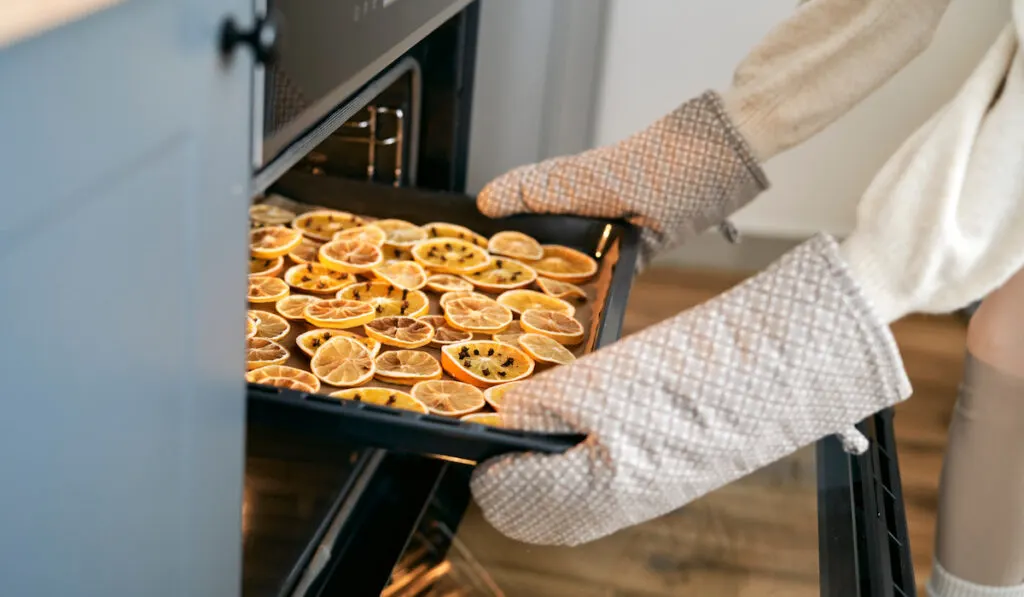
Other than sun-drying, you can use the oven if you live in an area with low temperatures.
Fruits such as apples, bananas, oranges, cherries, pears, nectarines, and peaches are suited for oven-drying.
How to preserve:
- Prepare your fruit by washing and slicing it.
- Preheat the oven between 130 to 150 degrees Fahrenheit.
- Line your baking tray with parchment paper and then evenly spread the fruits.
- Place the tray in the oven and turn on the fan to allow airflow. Alternatively, you can open the oven door intermittently to allow excess moisture to escape.
- You should flip the fruits several times for the best results.
- It may take a few hours for the fruits to dry adequately. The time depends on the type of fruit.

6. Dehydrating
A dehydrator can serve you better if you like to consume a specific seasonal fruit all through the year. The appliance can help you dry citrus fruit adequately.
How to preserve:
- Wash the fruit and thinly slice them.
- Lay them on the dehydrating rack. Spread them out evenly so that they do not overlap.
- Lay the rack on top of the dehydrator.
- Tightly lock your dehydrator, turn it on, and set it at 122 degrees Fahrenheit (50 degrees Celsius).
- Wait for 18 hours or more, checking them after every 6 hours.
- Remove the fruits from the rack and put them in a sterile jar.
- Store in a cool dark place.

7. Pickle the Fruit
Pickling is one of the conventional ways of preserving fruits like lemons, mango, and pears.
How to preserve:
- Sort your brine ingredients – a tablespoon of sugar, two teaspoons of salt, and half a cup of apple cider vinegar.
- Mix the ingredients by whisking until the salt and sugar dissolve.
- Heat slightly.
- Slice your fruits and put them in a sterile heat-safe container.
- Pour the brine into the jar until it’s an inch less full.
- Seal tightly and store in the fridge right away.
Closing Remark
Preserving fruit doesn’t have to be complicated. You can store your fruit for future use through drying, canning, and pickling.
The method you choose will be determined by the type of fruit you want to preserve and the availability of the equipment and ingredients needed.
Whichever your preference, always ensure that your fruits are cleaned and that the storage containers are sterile and sealed appropriately.
Resources
- https://www.webmd.com/diet/what-are-natural-preservatives
- https://www.sugarnutritionresource.org/news-articles/sugar-as-a-preservative
- https://nchfp.uga.edu/publications/uga/uga_freeze_fruit.pdf
- https://nchfp.uga.edu/how/general/how_canning_preserves_foods.html
- https://www.canr.msu.edu/news/vacuum-sealed-food-what-are-the-food-safety-concerns
- https://www.hsph.harvard.edu/nutritionsource/food-features/vinegar/
